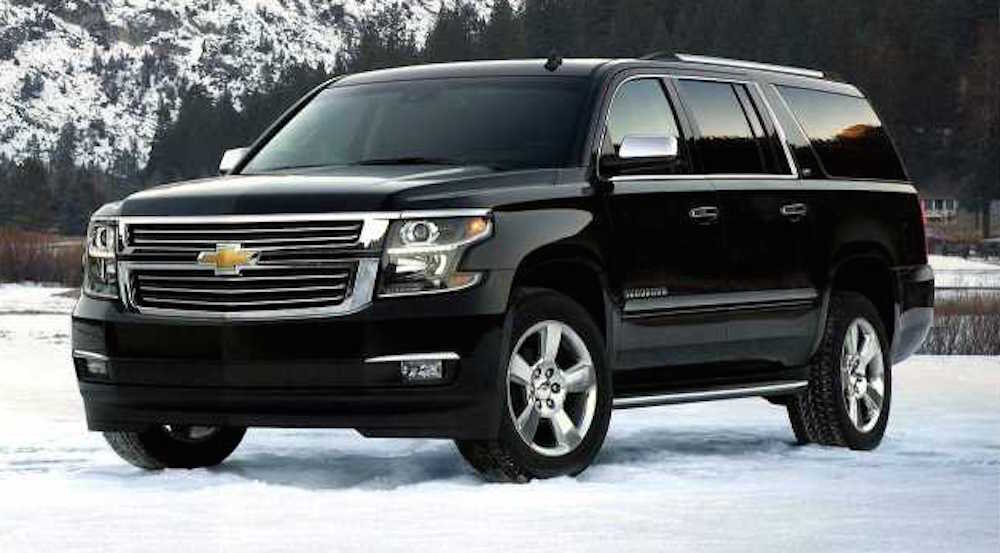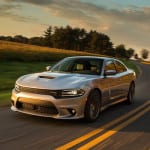The Chevy Suburban is the brand’s longest-tenured nameplate, having made its debut all the way back in 1933. Since then, we’ve seen the popular full-size, extended-length SUV evolve into its current version, although the vehicle didn’t always resemble its 2016 version. There have obviously been a number of changes to the vehicle over its 80-plus years on the market, and you can learn all about those revisions below.
While the vehicle may have changed over time, two things have remained consistent: its inspired a number of Chevy models, and the nameplate continues to be a popular choice worldwide (particularly in Europe and South America).
Before you go shopping for a Chevy Equinox, Tahoe, Trax, or Traverse in Miami, learn more about Chevy’s first SUV: the Suburban…
First Generation
The ‘Suburban’ name was generally used as a way to classify similar vehicles that featured a windowed body similar to a station wagon, with brands like DeSoto, Dodge, Plymouth, Studebaker, Nash and GMC using the designation. The variety of these Suburbans on the market ultimately influenced Chevy to produce their own vehicle, and the brand’s original version of the vehicle eventually hit the market in 1933. Built on a half-ton truck frame and featuring a body made mostly of wood, the eight-passenger vehicle was specifically produced for the National Guard and Civilian Conservation Corps. The original Suburban lasted for just over a year.
Second Generation
Chevy debuted their second version of the Suburban in 1935, but they advertised their vehicle as a “Carryall Suburban.” The name was derived from the fact that the engineers borrowed many aspects of the brand’s pickup models, including the front sheet metal and frames. The SUV separated itself by including all-metal wagon bodies.
Third Generation
After the Carryall Suburban sat on the market for five years, Chevy produced the third generation SUV for the 1941, 1942 and 1946 model years. Used primarily as a mode of military transport during the war, the vehicle also made a name for itself among everyday drivers.
Featuring either a 216-cubic-inch six-cylinder 3.5-liter or 228-cubic-inch six-cylinder 3.7-liter engine, the vehicle shared many attributes and features with the AK Series trucks.
Fourth Generation
For the next generation of Suburbans, Chevy again modeled the design after their pickup trucks, this time using the Chevrolet Advance Design series. This generation of Suburban ended up inspiring a vehicle of its own, as the Chevrolet HHR used the SUV’s design years later.
While the generation made its debut in 1947, it wasn’t until 1953 that the SUV saw some major renovations. The brand included their Hydra-Matic four-speed automatic transmission, which coupled perfectly with the 216-cubic-inch 3.5-liter Stovebolt OHC I6 engine or the 235-cubic-inch 3.9-liter Thriftmaster I6.
On the inside, the front bench seat was split into thirds, with a pair of seats on the driver’s side and one seat on the passenger’s side. Out back, there were 2/3 seats, meaning passengers had to climb over the front and second row to get to the back.
Fifth Generation
The brand updated the mechanics and styling of many of their vehicles in 1955, setting the stage for the fifth generation Suburban. The vehicle now included a flatter hood, redesigned front fenders, and a trapezoid grill. Under the hood, you’d find either the 145-horsepower 265-cubic-inch 4.3-liter V8 engine, or you could instead go for the 155-horsepower 283-cubic-inch 4.6-liter V8 engine.
Sixth Generation
When the sixth generation Suburban debuted in 1960, the brand had once again taken bits and pieces from the brand’s other vehicles. They specifically used 1950s Chevy cars, stealing the large oval ports that sat above the grille. Of course, there were plenty of new features included in the SUV, like the front independent suspension and the wrap around windshield.
Customers had a choice of either the I-6 or the small-block V8 engine, although a 5.0-liter GMC V6 engine was also available on GMC models. These units could be coupled with a three-speed or four-speed manual transmission, as well as the automatic Powerglide system and the dual-range Hydramatic (in GMC’s version).
Seventh Generation
The next generation of Suburbans saw few changes from its predecessor. Customers once again had options; they could choose between drivetrains (two-wheel drive or four-wheel drive) and engines (CI inline 6, CI small block V-8, or the CI big block V-8).
Perhaps the biggest story during the seventh generation’s tenure (1967-1972) was the release of the Chevrolet Veraneio in Brazil. A five-door version of the standard Suburban, the Veraneio was also based on the Chevy C-14. The sheet metal exterior was exclusive to Brazil, as was the Chevy 4.2-liter inline-six (based on the pre-1960s Stovebolt) or 4.1-liter Opala engine. The North American version of the Suburban would hit Brazil decades later, with the SUV replacing the ‘C Series’ in 1997.
The Veraneio ended up being a hit, ranking fourth on Autoweek’s listing of the top Chevy station wagons that never made it to America. However, if some ambitious customer was interested, they could opt to have the vehicle sent to the United States.
Eighth Generation
The longest-lasting generation made its debut in 1973. Due to the revamped design of the third-generation C/R and K/V models, the engineers transformed the Suburban into a four-door vehicle. The new Suburbans also included a front-and-rear air conditioning unit, a baggage rack, a new heater under the third seats, and step-plates allowing for easier entry and exit. Engineers also included the innovative Eaton Automatic Differential Lock.
The engine came standard with the small-block 305-cubic-inch V8 engine (with a 350- and 400-cubic-inch option also available). From 1982 on, customers could also opt for the 6.2-liter 130-horsepower Detroit Diesel V8 engine, which ended up becoming the unit of choice for exported European Suburbans. The vehicles also came with a variety of transmission options, including the three-speed Turbo Hydra-Matic 350 automatic, the Turbo Hydra-Matic 400, and the four-speed Turbo Hydra-Matic 700R4.
Ninth Generation
Following the path of similar pickup trucks in the late 1980s, the ninth generation Suburban was GMT400-based. Released in 1992, there were multiple engine options for customers, like the small-block 5.7-liter V8, the big-block 7.4-liter V8, and the optional 6.5-liter Turbo diesel. The SUVs came equipped with either the 4L60 four-speed automatic or the 4L80 four-speed automatic.
The Suburban saw several cosmetic changed until the ninth generation’s demise in 1999. Over time, engineers included a new front clip and center stop lamp, a new driver-side air bag, updated transmission (and subsequent steering) system, and the OnStar or PassLock security system.
While sales in recent years have fallen off a bit, we can’t attribute the decline to the quality of the vehicle. In fact, the tenth through twelve generation Suburbans are still impressive and capable vehicles, but there’s much more competition nowadays than there was only 20 years ago. As customers soon recognize that few full-size, extended-length SUVs can compete with the Suburban, we’ll surely see these sales climb once again.











